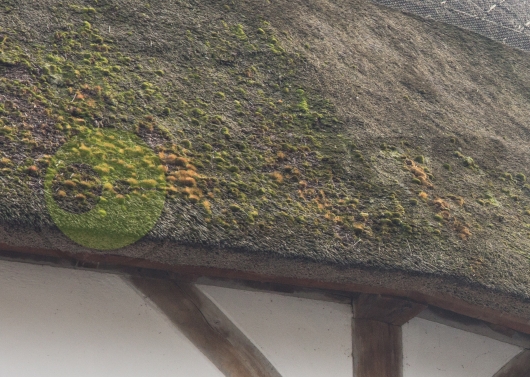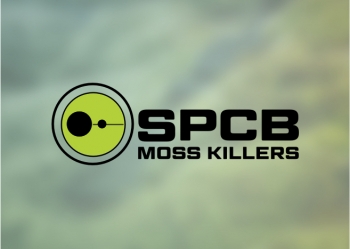Removing, treating and preventing moss on a thatched roof

Long Straw, Combed Wheat and Norfolk Reed are the main three materials used for thatching roofs in the UK and obviously, as time passes, areas of a thatched roof will become susceptible to the growth of moss. Whilst the adverse effects of moss growth upon a thatched roof may not be as obvious as those for a standard tiled pitched or multi-layer flat roof, moss growth can have serious adverse effects on the lifespan of a roof. Moss will hold moisture which can slow the drying of the surface and stopping the roof from breathing. Many people also find the growth of moss on a thatched roof unsightly and it will attract birds to the roof which can cause additional problems. Apart from a new ridge every 8-15 years, if a thatch roof is well maintained then it can last for many, many years and the killing and removal of moss and its spores will help with this long lifespan. The treatment for moss growth, on this type of roof, is simple and quite straight forward. There are two options available that are dependent upon the age and condition of your roof. It is important that any products used upon a thatch roof are pH neutral and, if possible, are not required to be washed from the surface. All our recommended products (including Baticlean CR) are pH neutral and will not have any adverse effects upon the natural roof covering.
Given the nature of a thatch roof we would recommend only treating between the months of April - October. The reason for this is that Baticlean CR should, ideally, be applied to a dry surface. Given that thatch will take longer to dry than other types of roof the generally lower tempretures and fewer sunlight hours between October and April means that whilst the immediate surface may be dry the reeds beneath this will be damp therefore the best results will not be obtained. New Thatched Roof If you have a new roof or your property has been recently re-covered then this is the perfect time to treat the area. Although the roof may not be showing signs of moss growth, there will be moss spores across the surface. Whilst the spores do take time to become visible moss growth, it is easier to treat the surface with a moss killing product BEFORE the moss starts to become visible. The smaller the moss then the less chemicals that will be required and less time will be taken having to remove moss growth.
Before you treat the roof area ensure it is dry and that no rain is forecast at least for the rest of the day. We normally recommend not spraying your roof if rain has fallen within the past 2-3 days. Simply spray the area with CONCENTRATED MOSS & ALGAE KILLER - Baticlean CR at a coverage rate of around 30 square meters per litre of product. This application will kill the spores (together with any growth) and then stays on the surface to inhibit re-growth.
Older Thatched Roof If the roof is older or it has moss growth already on it then we recommend brushing the area to remove as much of the 'growth' as possible. If this is not possible then do not worry, simply ensure the surface is dry and spray the area with BATICLEAN CR which will kill the growth. However it may be advisable to give the roof a second coat once the moss has died to ensure that the whole roof surface has been in contact with the Baticlean CR so that it has been able to kill as many of the moss spores as possible.
As owners of a thatch property are aware, and as detailed earlier, the ridge area of a thatched roof will need to be attended to every decade or so. Whilst this work is being undertaken other minor repairs should also be carried out, areas straightened and any detailed areas checked. Whilst doing this any netting is removed and this is obviously an ideal time to clear moss and apply the moss killer BATICLEAN CR. The roof can be safely brushed of moss whilst the repairs are taking place and sprayed before new netting is fitted.
Related products
You may also be interested in...
Baticlean CR
Concentrated moss killer - no rinsing. Kill moss, algae, lichen & mould on all hard surfaces including roofs, walls & patios.
Sprayer Extension Long Lance - 5.4 metres
Five piece telescopic lance extension with 5.4-metre reach. Can be used with all knapsack, backpack and compression sprayers within our range.
Kale 12 Compression Sprayer
Pressure regulator, 3 BAR maximum working pressure and an 8 litre working tank capacity.
